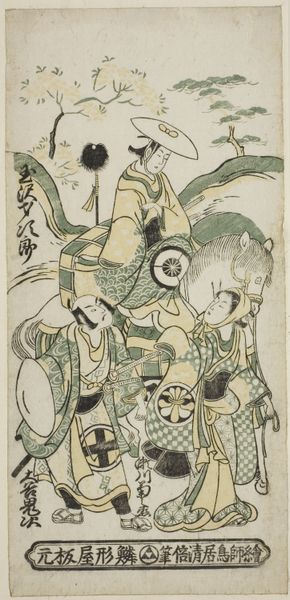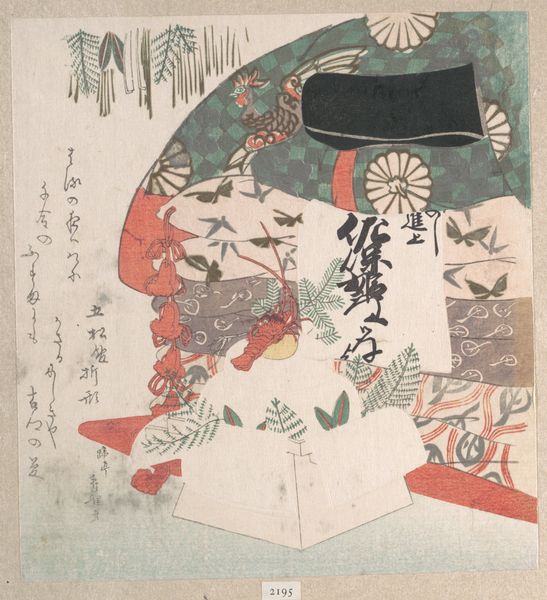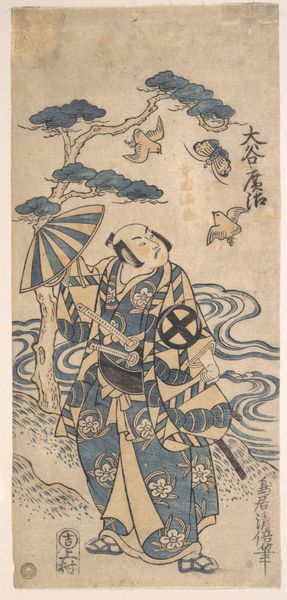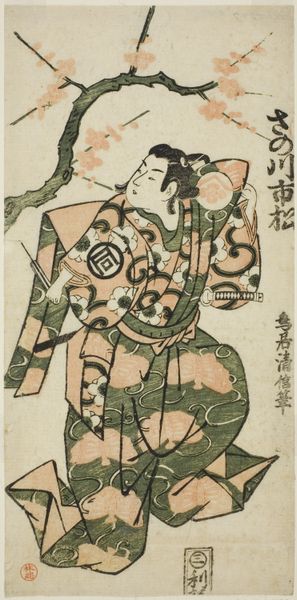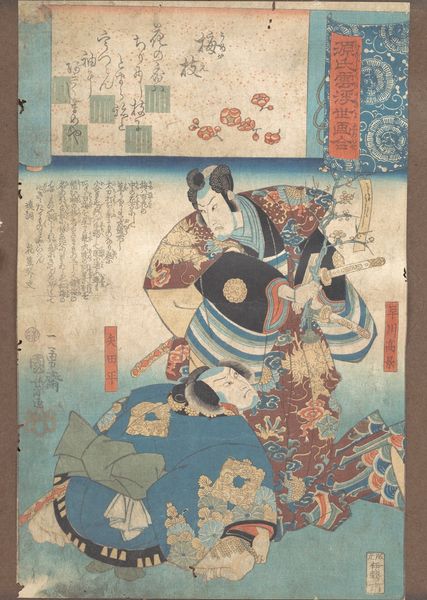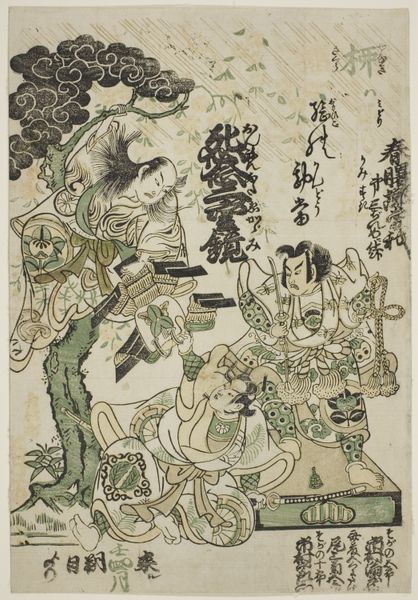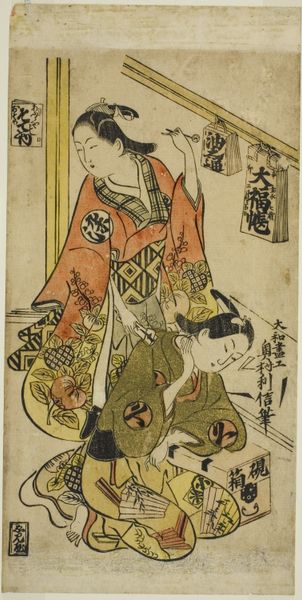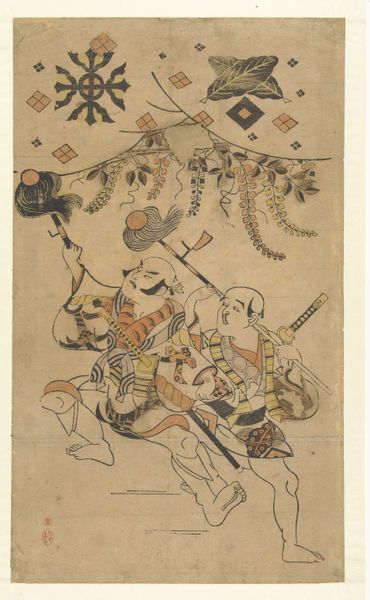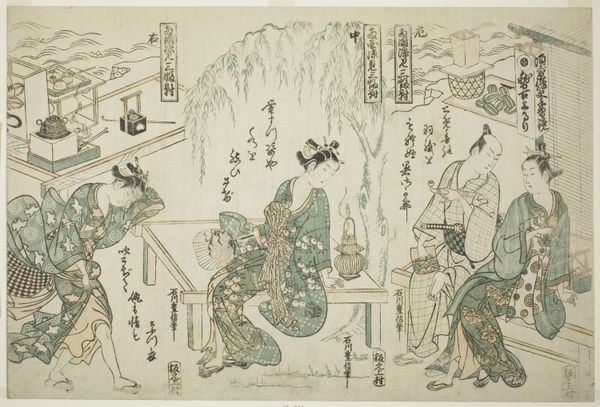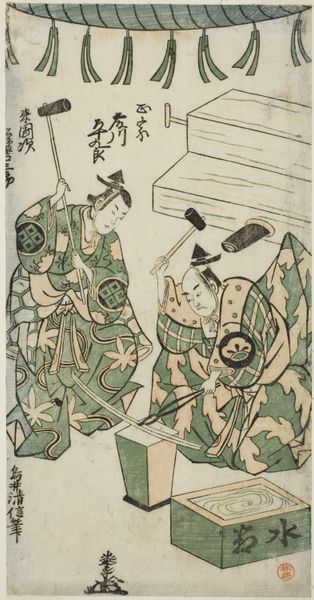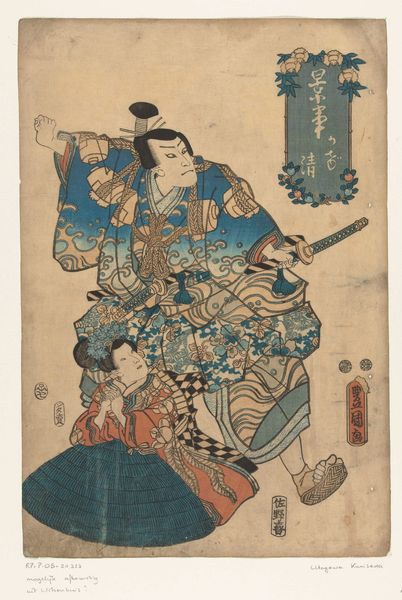
The Actors Ichikawa Ebizo I as Miura Osuke, Ichikawa Danjuro lV as Okazaki Akushiro, and Nakamura Sukegoro I as Kato Arajiro in the play "Miura no Osuke Bumon no Kotobuki," performed at the Nakamura Theater in the eleventh month, 1754 1754
0:00
0:00
performance, print, woodblock-print
#
performance
# print
#
asian-art
#
ukiyo-e
#
figuration
#
woodblock-print
Dimensions: 43.8 × 30.6 cm (17 1/8 × 12 1/8 in.)
Copyright: Public Domain
This 1754 woodblock print by Torii Kiyohiro captures three actors in a Kabuki play, their identities proclaimed within the artwork's inscription. Dominating the composition are symbols of power and performance. Swords, emblems of the samurai class, are brandished and held, signifying valor, readiness, and the high social standing of these performers and their characters. Notice the elaborate costumes, adorned with patterns and crests, each a carefully coded signifier of lineage, role, and identity within the rigid social hierarchy of Edo-period Japan. These motifs resonate across cultures. The sword, for example, is not merely a weapon but a symbol found in myriad contexts, from ancient Roman gladiators to medieval European knights. Its appearance here speaks to a universal language of power. Such cross-cultural symbols become vessels carrying emotions, evolving yet persisting, much like the archetypes that flicker in our collective consciousness, compelling us with their enduring relevance.
Comments
No comments
Be the first to comment and join the conversation on the ultimate creative platform.
